I made a simple html testpage. If the page is opened (http://localhost/cut/public/updateFile) then I send a timestamp to my webserver, where the value is written into a file date.txt e.g.:
4/8/2017 @ 14:50:19
I also wrote a C# Windows Forms App which makes a request to the webserver to get the value of this file (date.txt), every X seconds.
My goal is to show the current time in a notification box every X seconds by reading it from the file on the server (for practice only)
However, before I get the file content, I need to update it first of course to get the current date and time.
Is it possible to solve this with the rules defined above? This is my attempt:
private void timerA_Tick(object sender, EventArgs e)
{
sendWebRequest("http://localhost/cut/public/updateFile");
timerA.Stop();
timerA2.Interval = 5000;
timerA2.Start();
}
private void timerA2_tick(object sender, EventArgs e)
{
//Returns the content of date.txt
string response = sendWebRequest("http://localhost/cut/public/fileApi?action=read&targetFile=date");
//Show Notification
notifyIcon1.Visible = true;
notifyIcon1.Icon = SystemIcons.Exclamation;
notifyIcon1.BalloonTipTitle = "File content";
notifyIcon1.BalloonTipText = response;
notifyIcon1.BalloonTipIcon = ToolTipIcon.Info;
notifyIcon1.ShowBalloonTip(10000);
timerA2.Stop();
timerA.Start();
}
/**
* Send request and get response as string
*/
public static string sendWebRequest(string URL)
{
WebRequest request = WebRequest.Create(URL);
WebResponse response = request.GetResponse();
StreamReader streamReader = new StreamReader(response.GetResponseStream());
return (string)streamReader.ReadToEnd();
}
However I always get 4/8/2017 @ 14:50:19 it does not update as It should.
It obviously does not work this way, since WebRequest.Create does only gets the html file as it is and delivers it back to my C# Application, but it does not execute the javascript where I make the request to the server.
I only created this example above to ask if it is somehow possible to achive this at this way or if C# is not designed to solve problems like this?
My only idea is to create a hidden webbrowser in my Form1 and open http://localhost/cut/public/updateFile to start the update but I am not sure if this even works.
I created a webbrowser element and call the update URL like this:
webBrowser1.Navigate("http://localhost/cut/public/updateFile");
However, there are plenty of script error messages, which are found in the jquery file.
And my script won't work either because of the not working jquery. So I guess it would work, but not with jquery, or I have to fix all errors in the jQuery file.
How to solve this problem?

